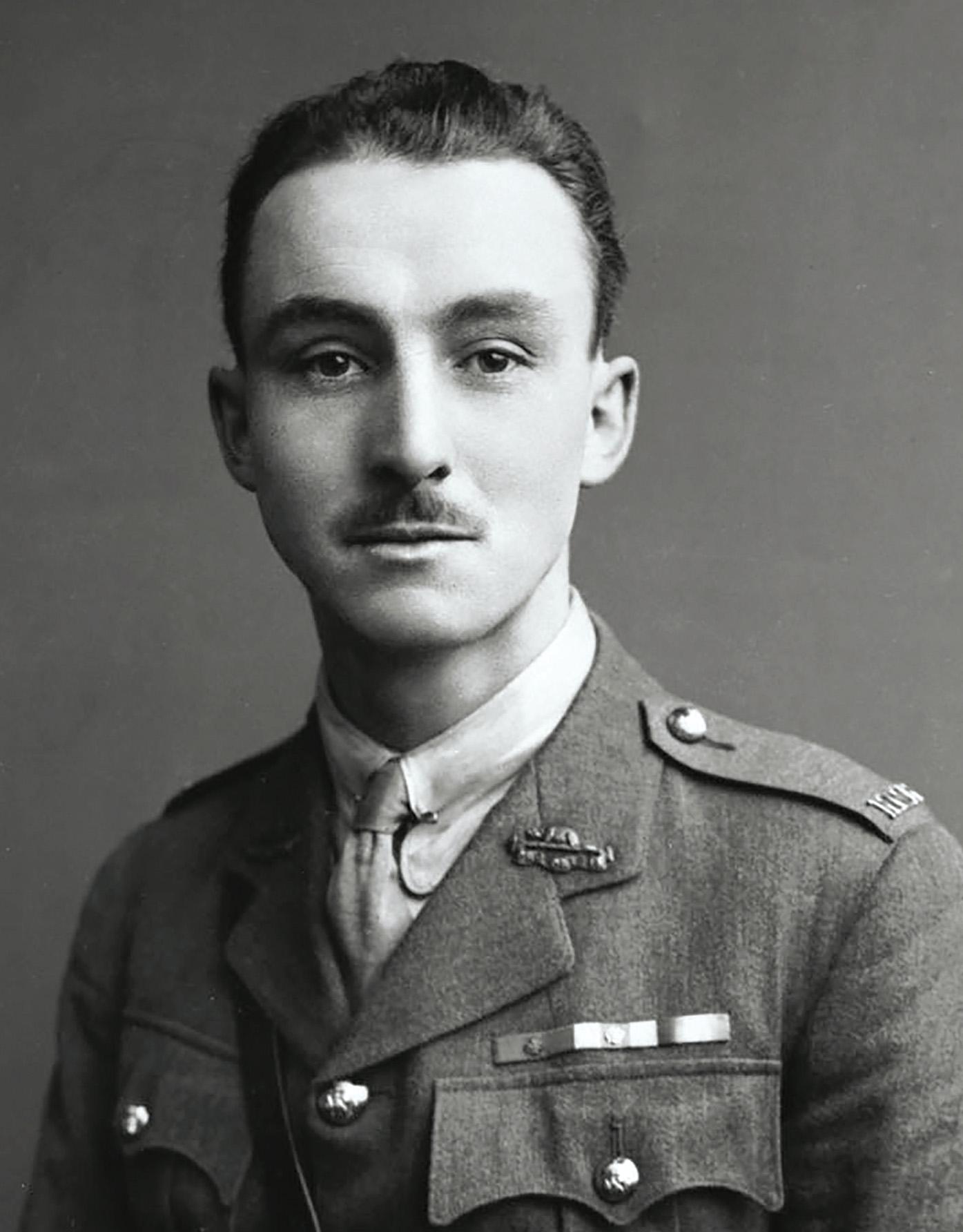Try GOLD - Free
Heroes of the Victoria Cross: MILTON FOWLER GREGG
History of War
|Issue 143
On 28 September, 1918, this Royal Canadian Regiment officer led his men through uncut barbed wire into enemy trenches

Lieutenant Milton Fowler Gregg of the Royal Canadian Regiment (RCR) squinted up at the heavy rain. He wiped the water and condensation from his gas mask goggles and stared out into the pre-dawn darkness. Some of his shivering comrades had endured a crowded bus ride and a three-hour march through the night to reach his staging post 2.5 miles (4km) east of the Canal du Nord. They had achieved great success during the previous day's fighting: in a surprise attack on Bourlon Wood, the RCR had taken the high ground, which the Germans had been using for their artillery. Still, artillery shells fell all around, many containing gas, shaking the nerves of the sodden and shivering Canadians as they waited for sunrise.
Zero hour finally came at 6am. Piercing whistles cut through the grey dawn and the men leapt out of their defensive positions. Yet the charge stopped well short of its objective. British aerial reconnaissance had failed to spot the concealed tangle of wire running along the Cambrai-Douai road. Shocking casualties soon mounted as the Germans concentrated their heavy machine gun fire on the exposed attackers. Someone needed to find a way through the wire and silence the machine guns before the assault crumbled. Gregg looked into the terrified eyes of the man next to him and began to crawl forwards.
His military career had started at 18, joining Canada's most storied regiment in 1910. The 8th Canadian Hussars are the longest-serving mounted/armoured regiment in the Canadian Army, with its origins in 1775. Four years after Gregg joined the ranks, the First World War broke out and he stepped up from the militia into The Black Watch (Royal Highland Regiment) of Canada. He was of average appearance, described on entry into the Black Watch as 5ft 8in (172cm) tall and reasonably well-built at 156lb (70kg).

This story is from the Issue 143 edition of History of War.
Subscribe to Magzter GOLD to access thousands of curated premium stories, and 10,000+ magazines and newspapers.
Already a subscriber? Sign In
MORE STORIES FROM History of War

History of War
FLYING INTO HISTORY ENOLA GAY
The first atomic bomb was dropped on Japan by an American B-29 bomber, preceding the country's capitulation in WWII. Here navigator Theodore Van Kirk recalls his experience of the day that changed history
7 mins
Issue 149

History of War
PUTIN'S SUBMARINE FLEET
From the Cold War to modern operations, the threat beneath the waves has been steadily building, and could be about to escalate
4 mins
Issue 149

History of War
ON SILVER WINGS
THIS MOVING BIOGRAPHY OF AN 'UNKNOWN' WWII RAF FIGHTER ACE CHARTS DESMOND IBBOTSON'S CAREER, THE STORY ENDING WITH A TWIST WHEN HIS REMAINS ARE DISCOVERED IN ITALY IN 2005
2 mins
Issue 149

History of War
CAMBODIA vs THAILAND ROOTS OF THE BORDER WAR
July 2025's clashes are the latest in a long frontier conflict that has gone unresolved, from the era of warrior kings to smart bombs
4 mins
Issue 149

History of War
TASK FORCE GREMLIN
At the end of WWII the Japanese Imperial Army Air Force was conscripted into the Royal Air Force in Southeast Asia
7 mins
Issue 149

History of War
RAF RETURNS TO NUCLEAR
Nearly 30 years after giving them up, the RAF is poised to reacquire air-dropped nuclear weapons
3 mins
Issue 149

History of War
NO MORE NAPOLEONS
A MAGISTERIAL SURVEY OF NAVAL POWER AND POLICY
2 mins
Issue 149

History of War
STALIN'S BLITZKRIEG
In the final month of WWII, the Red Army launched a devastating strike into Manchuria, opening a new front with Japan and threatening invasion of the Home Islands
10 mins
Issue 149

History of War
BALACLAVA POCKET WATCH
This William IV silver timepiece and its owner survived the Charge of the Light Brigade at the Battle of Balaclava
1 mins
Issue 149

History of War
THE END OF THE SPY?
Human intelligence is a dying art, but it is still crucial for security agencies worldwide
3 mins
Issue 149
Listen
Translate
Change font size
